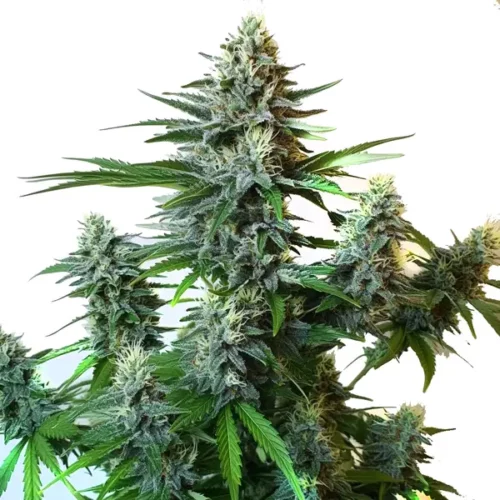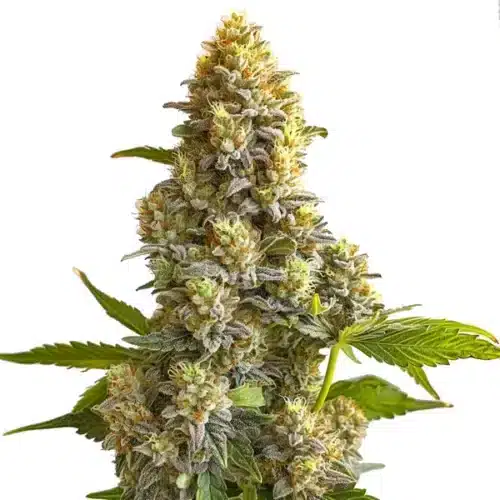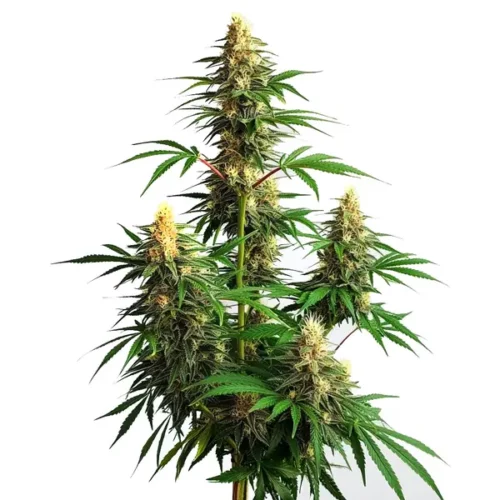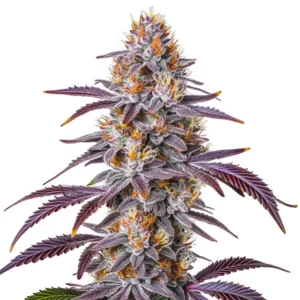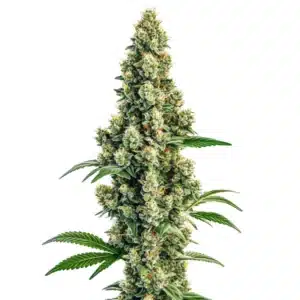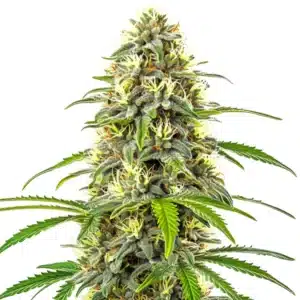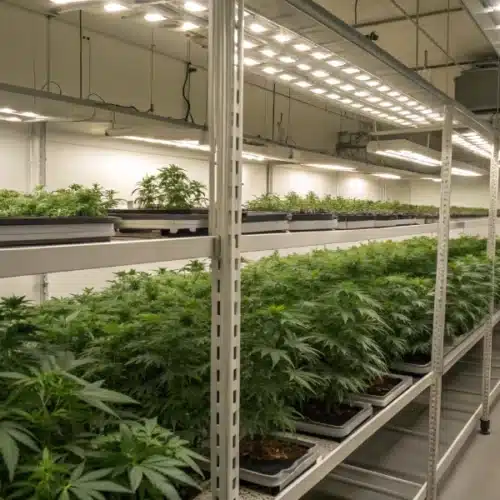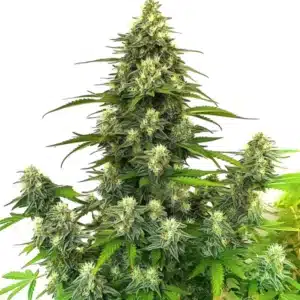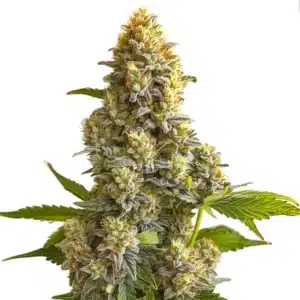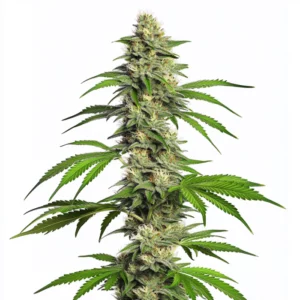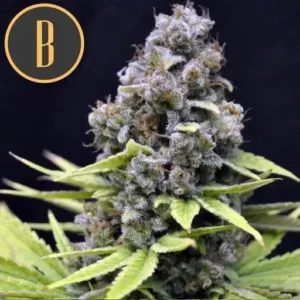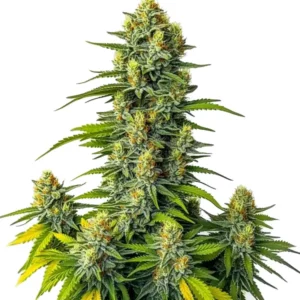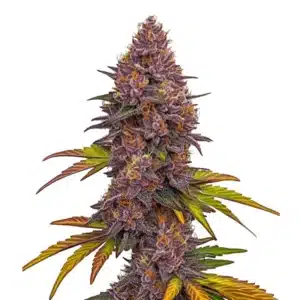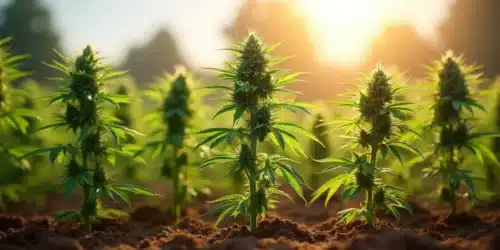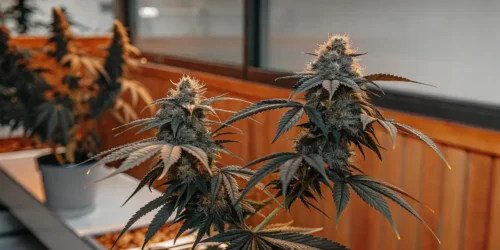Growing the strongest autoflower strains can offer cannabis cultivators impressive yields and powerful effects in a compact, fast-growing format. With autoflowers becoming more potent and accessible, knowing which strains to choose and how to maximize their potency is key to getting the best results.
Recommended Strains
Gorilla Glue Autoflower F1
 THC: 24% - 28%
THC: 24% - 28% Type of seed: Autoflower F1
Type of seed: Autoflower F1 Phenotype: Mostly Sativa
Phenotype: Mostly Sativa Day to flower: 8 - 10 weeks
Day to flower: 8 - 10 weeks
Bruce Banner Autoflower
 THC: 21% - 26%
THC: 21% - 26% Type of seed: Autoflowering
Type of seed: Autoflowering Phenotype: Mostly Sativa
Phenotype: Mostly Sativa Day to flower: 8 - 10 weeks
Day to flower: 8 - 10 weeks
Zkittlez
 THC: 16% - 20%
THC: 16% - 20% Type of seed: Feminized
Type of seed: Feminized Phenotype: Mostly Indica
Phenotype: Mostly Indica Day to flower: 8 - 10 weeks
Day to flower: 8 - 10 weeks
Amnesia Haze Auto
 THC: 16% - 17%
THC: 16% - 17% Type of seed: Autoflowering
Type of seed: Autoflowering Phenotype: Mostly Sativa
Phenotype: Mostly Sativa Day to flower: 9 - 11 weeks
Day to flower: 9 - 11 weeks
What Makes an Autoflower Strain Strong?
Autoflowers have evolved significantly since their early days. Thanks to advancements in cannabis genetics, today’s autoflowering strains can compete with photoperiod plants in terms of strength and yield. To know what makes an autoflower strain powerful, it’s essential to look at both genetics and growing conditions.
Autoflower Genetics and Potency
Autoflower strains get their name from their ability to flower automatically, regardless of light cycles. Unlike photoperiod plants, which require a change in light exposure to start flowering, autoflowers enter the flowering stage based on time. This trait comes from Cannabis ruderalis, a plant native to regions with short summers and harsh climates.
While ruderalis itself is not particularly potent, modern autoflower strains combine its quick flowering traits with genetics from high-THC sativa and indica strains. The result is a fast-growing plant that doesn’t sacrifice potency. Autoflowers like Gorilla Glue Auto and Bruce Banner Auto are examples of how advanced breeding techniques have led to autoflowers with THC levels that rival their photoperiod counterparts.
Growing Conditions That Boost Potency
Strong genetics lay the foundation for a potent autoflower, but growing conditions play an equally critical role. Inconsistent lighting, poor nutrient management, and improper environmental controls can reduce the THC content of your plants, even if you start with high-quality seeds.
To boost potency, ensure your plants receive plenty of light, particularly during the vegetative phase. Autoflowers benefit from around 18-20 hours of light daily, as they grow best under long light cycles. Nutrients should be carefully managed, with a focus on nitrogen during the vegetative stage and phosphorus and potassium during flowering. Proper environmental controls, including temperature and humidity management, are also essential to getting the most out of the strongest autoflower strains.

Promos & Deals
Top 5 Strongest Autoflower Strains
When it comes to the strongest autoflower strains, these five stand out for their combination of THC content, resin production, and overall potency. Each of these strains has been bred to maximize strength while maintaining the benefits of the autoflower lifecycle.
1. Gorilla Glue Auto: Extreme Potency in a Compact Plant
Gorilla Glue Auto is renowned for its heavy resin production and sky-high THC levels, often reaching 24-26%. This autoflower strain delivers a strong, euphoric high with deeply relaxing effects, making it a favorite among seasoned cannabis users.
The compact structure of Gorilla Glue Auto makes it an excellent choice for indoor growers with limited space. Its quick lifecycle, typically finishing in around 8-10 weeks from seed to harvest, means you won’t have to wait long to enjoy its potent effects. For those growing outdoors, Gorilla Glue Auto’s resilient genetics allow it to thrive in a variety of climates, but for maximum potency, provide plenty of direct sunlight and maintain consistent temperatures.
2. Bruce Banner Auto: A Powerhouse of THC
Bruce Banner Auto is famous for its overwhelming strength, with THC levels often exceeding 25%. This strain provides an intense cerebral high, followed by a powerful body relaxation that makes it ideal for both recreational and medicinal users.
To get the most out of Bruce Banner Auto, it’s important to optimize its growing environment. Indoors, this strain responds well to high-intensity lighting and regular feeding with bloom-boosting nutrients. Outdoor growers should place Bruce Banner Auto in areas with full sunlight to maximize its growth and potency. The strain’s sativa-dominant genetics give it a slightly longer flowering time compared to other autoflowers, but the payoff in terms of strength and yield is well worth it.
3. Zkittlez: A Sweet and Powerful Strain
If you’re looking for a strain that combines flavor with strength, Zkittlez is a top choice. Known for its sweet, fruity flavor profile, Zkittlez offers a potent high with THC levels hovering around 23%. The effects are balanced, providing a euphoric, uplifting head high followed by a relaxing body buzz.
Zkittlez is an easy strain to grow, making it a great option for beginners looking to cultivate a strong autoflower. The plant’s resilience to pests and mold, combined with its forgiving nature, means that even novice growers can achieve impressive results. To enhance potency, ensure proper nutrient management during the flowering stage and avoid overwatering.
4. Amnesia Haze Auto: High-THC Sativa Dominance
For those who prefer sativa-dominant strains, Amnesia Haze Auto is a standout with THC levels regularly hitting 22-24%. This strain delivers an energetic, cerebral high that is perfect for daytime use, making it one of the best options for those seeking both potency and mental clarity.
Amnesia Haze Auto thrives in warm, sunny conditions, so outdoor growers in Mediterranean-like climates will see the best results. Indoors, using high-quality LED lights and maintaining a steady temperature can help increase yield and THC levels. Amnesia Haze Auto has a longer growing cycle compared to other autoflowers, but its potent effects and generous yield make it worth the wait.
5. Wedding Cake Auto: A Balanced and Potent Autoflower
Wedding Cake Auto is a hybrid strain that offers the perfect balance of potency and relaxation. With THC levels around 24%, it provides a strong, full-body high that’s great for winding down after a long day. The effects are calming without being overly sedative, making it a versatile strain for both day and nighttime use.
Wedding Cake Auto is relatively easy to grow, with a short flowering time of about 8-9 weeks. For those looking to maximize resin production, providing consistent light and maintaining proper humidity levels during the flowering stage are essential. This strain is also known for its high resin production, making it an ideal choice for growers looking to produce extracts or concentrates.
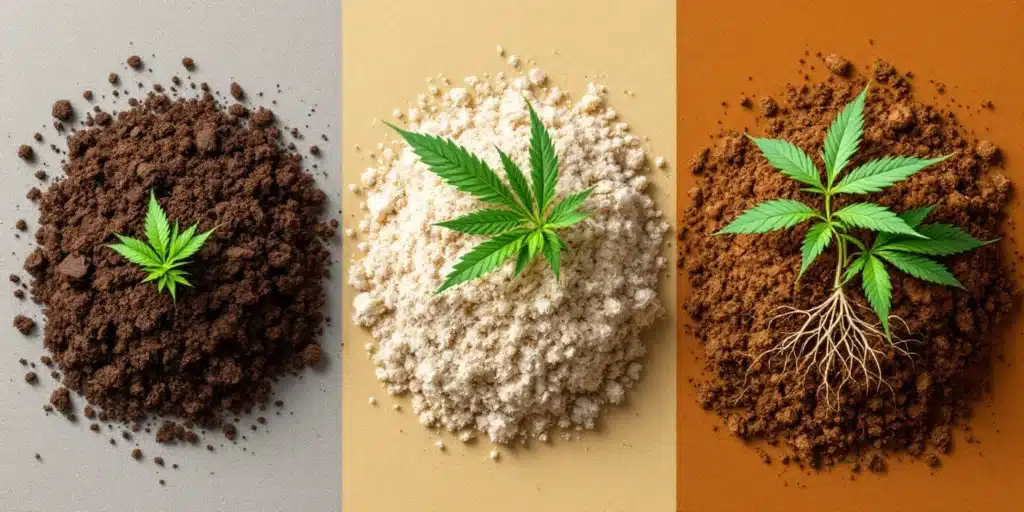
How to Boost Potency in Autoflower Strains
No matter how strong a strain is genetically, there are always ways to push its potency to the next level. Proper nutrient management, light exposure, and environmental controls can help enhance the effects of even the strongest autoflower strains.
Choosing the Right Nutrients for Autoflowers
The nutrients you provide your autoflowers will play a significant role in determining how strong your final product will be. Autoflowers have a shorter growth cycle, which means they require a tailored feeding schedule to optimize their growth.
Organic nutrients are a great option for enhancing flavor and potency, as they provide a slow-release form of nutrition that’s gentler on the plants. However, synthetic nutrients can deliver faster results and allow for more control over the feeding schedule. For maximum potency, focus on phosphorus and potassium during the flowering stage, as these nutrients encourage resin production and boost THC levels.
Lighting and Its Impact on THC Levels
Autoflowers benefit from long periods of light exposure, which helps boost THC levels. For indoor growers, high-quality LED lights with a full spectrum are ideal for enhancing potency. The blue light spectrum during the vegetative stage promotes strong growth, while red light in the flowering stage encourages dense bud development.
Outdoor growers should aim to provide their plants with as much direct sunlight as possible, as natural sunlight delivers the full spectrum of light needed for optimal growth. The more light your plants receive, the more energy they have to produce THC and other cannabinoids.
Knowing THC Levels in Autoflower Strains
THC levels are one of the most critical factors when determining the potency of a cannabis strain. While autoflowers have historically been considered less potent than their photoperiod counterparts, advancements in breeding have led to autoflower strains that can rival or even exceed the strength of photoperiod plants.
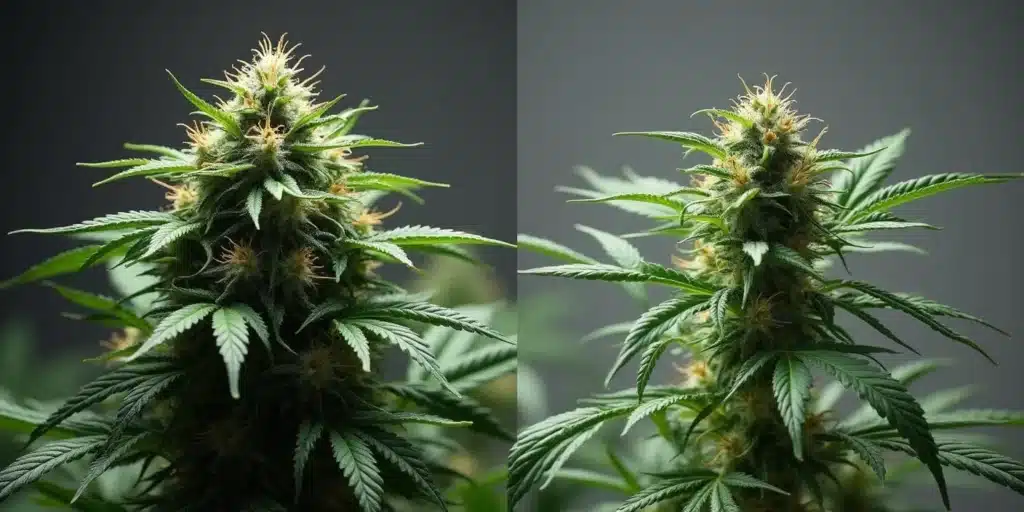
How THC Levels Are Measured
THC concentration is measured as a percentage of the plant’s dry weight. In general, strains with THC levels above 20% are considered to be strong, with some autoflowers reaching up to 26%. The strength of the high is determined not only by the THC percentage but also by how the cannabinoids and terpenes interact within the plant, a phenomenon known as the entourage effect.
By knowing how THC levels are measured, growers can better select strains that align with their desired effects. For those seeking the strongest autoflower strains, choosing a high-THC strain and optimizing the growing conditions will deliver the best results.
THC and Other Cannabinoids in Autoflowers
While THC levels are the primary focus when discussing potency, other cannabinoids like CBD and terpenes also play a significant role in shaping the effects of cannabis. Autoflower strains that are rich in terpenes, such as myrcene, limonene, or caryophyllene, can enhance the overall potency and experience of the strain, even if the THC percentage isn’t at its maximum.
Spray Terpenes in Strength
spray Terpenes are the aromatic compounds found in cannabis that not only give the plant its distinctive smell but also contribute to its effects. For example, myrcene has sedative properties, while limonene can provide uplifting and mood-boosting effects. Autoflower strains rich in terpenes often provide a more balanced and enjoyable experience, even at lower THC levels.
When growing autoflowers, enhancing terpene production can be just as important as focusing on THC levels. Proper light exposure, careful nutrient management, and stress training techniques like low-stress training (LST) or supercropping can all help boost terpene production and make your cannabis more potent overall.
CBD and Its Balancing Effects on THC
CBD is another cannabinoid that can influence the strength of an autoflower strain. While it doesn’t have psychoactive effects like THC, it can modulate the intensity of the high. Strains with higher CBD levels can balance the psychoactive effects of THC, creating a more manageable, enjoyable experience without overwhelming the user.
Some of the strongest autoflower strains include balanced ratios of CBD to THC, offering a more holistic cannabis experience. This balance can be especially beneficial for those using cannabis medicinally, as CBD has been shown to reduce anxiety and inflammation while maintaining the therapeutic benefits of THC.
Additional Tips for Growing Strong Autoflower Strains
Even with the best genetics, success with autoflowers comes down to the care and attention given to each plant. Here are some additional tips to ensure you’re growing the strongest autoflower strains possible:
Environmental Factors That Affect Potency
Temperature fluctuations and inconsistent light cycles can significantly affect the strength of your plants. Keep your growing environment stable, with daytime temperatures between 70-85°F (21-29°C) and nighttime temperatures no lower than 60°F (16°C). Autoflowers are more sensitive to environmental stress than photoperiod strains, so it’s important to carefully monitor your setup.
Harvest Timing for Maximum Potency
Harvest timing is critical for getting the most THC out of your plants. The longer you wait, the more THC will be produced, up to a point. If you harvest too late, THC begins to degrade into CBN, which has more sedative effects and less psychoactive power. Watch your trichomes carefully, and harvest when they turn milky white for the best balance of potency and effect.
FAQs About Strong Autoflower Strains
Autoflowers have come a long way in terms of potency, but many growers and consumers still have questions about how they compare to photoperiod strains and how best to cultivate them.
Are Autoflowers as Potent as Photoperiod Strains?
Yes, many autoflower strains today can match or even exceed the potency of traditional photoperiod strains. Thanks to advancements in breeding, autoflowers now boast THC levels comparable to those of photoperiod plants, making them a viable option for anyone seeking strong cannabis without the hassle of light manipulation.
Autoflowers also have the added advantage of being faster to harvest, making them ideal for growers looking for a quicker turnaround. However, growing conditions, nutrient management, and overall care still play a significant role in achieving maximum potency.
What Are the Best Techniques to Maximize THC in Autoflowers?
To maximize THC levels in autoflowers, focus on providing consistent light exposure, maintaining the right temperature and humidity, and feeding your plants a balanced nutrient mix. Techniques like low-stress training (LST) can help increase light exposure to all parts of the plant, promoting larger buds and higher resin production.
Regularly check for signs of nutrient deficiencies and adjust your feeding schedule accordingly to ensure your plants are getting the nutrients they need during each growth stage. Ensuring proper airflow and ventilation will also help maintain a healthy growing environment, preventing mold and other issues that could negatively impact potency.

